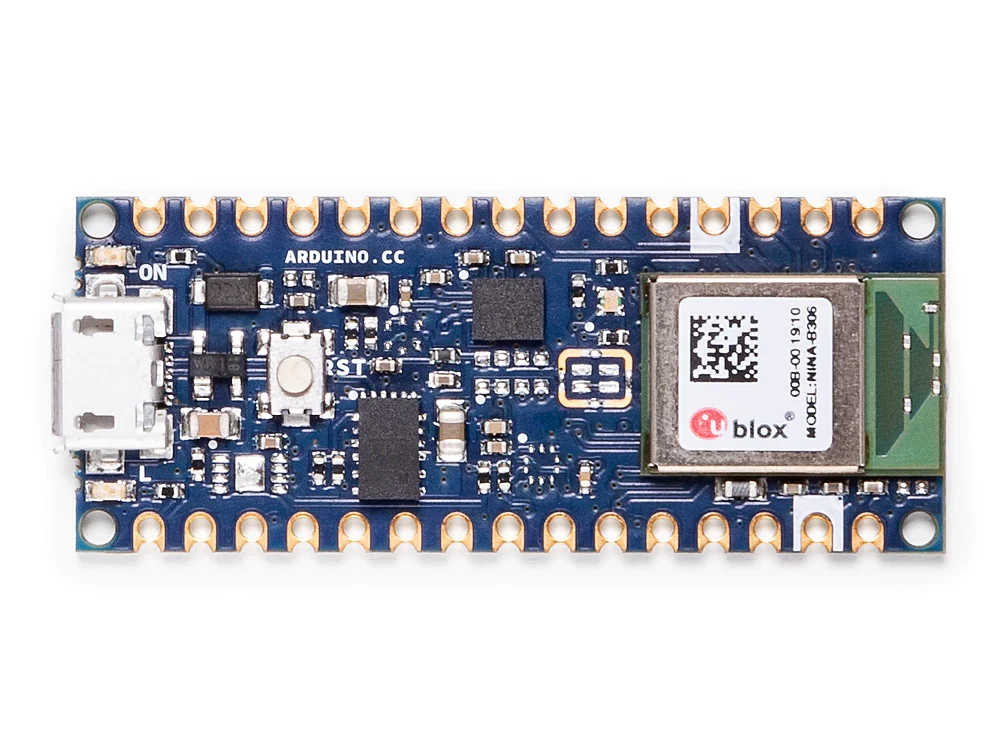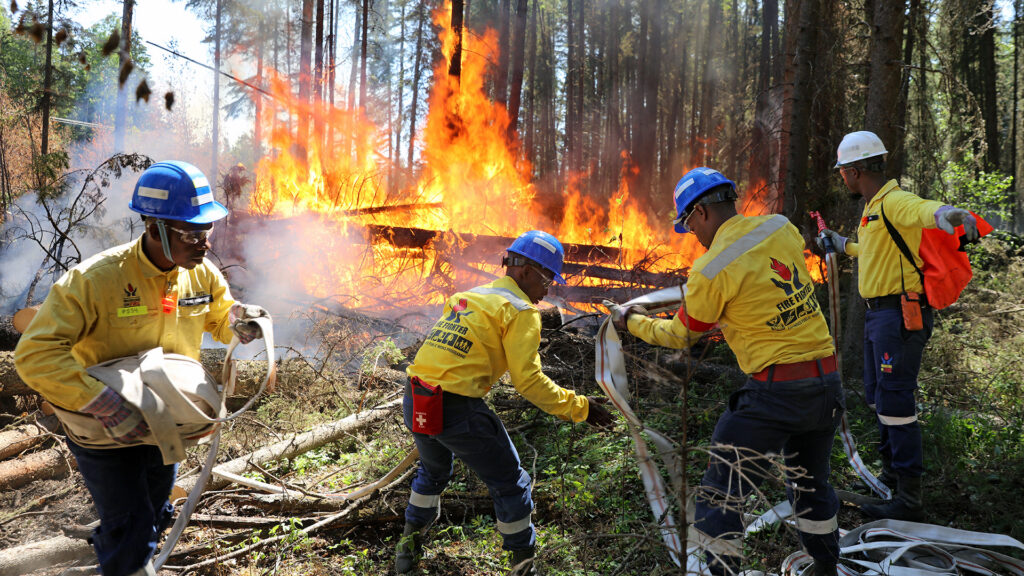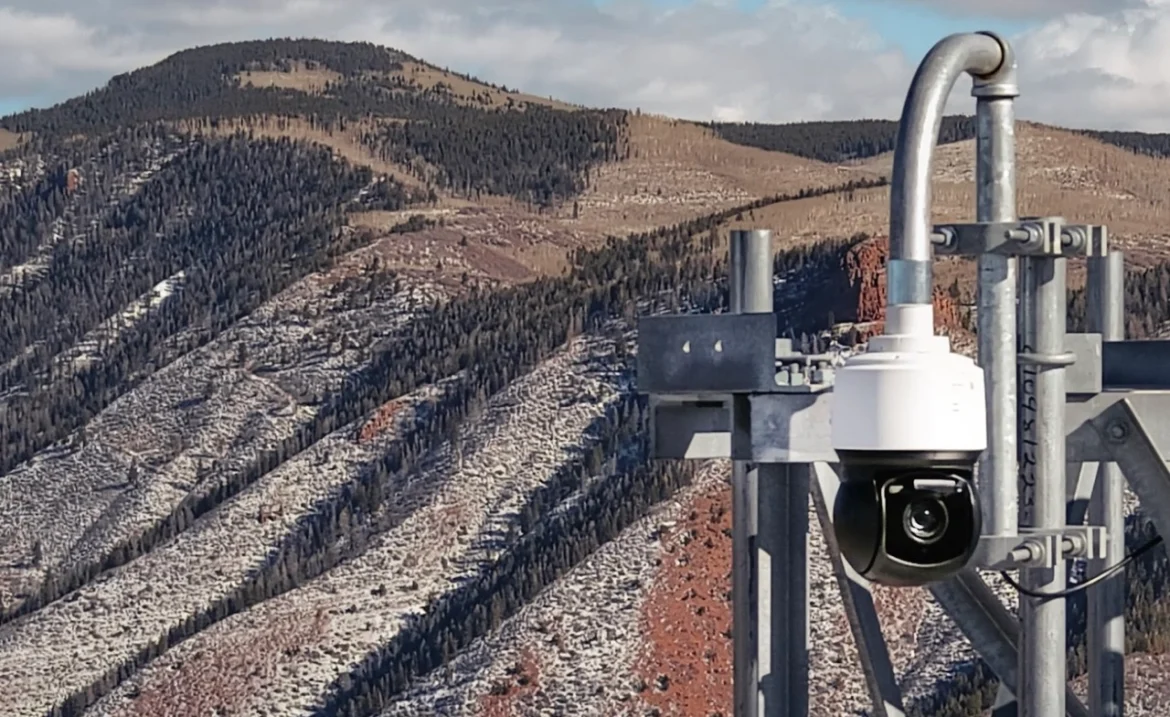Unleashing a Technological Revolution for Safer Tomorrows
In the ever-evolving battle against the escalating threat of wildfires, a beacon of hope shines through the ingenuity of a young coder harnessing the power of Artificial Intelligence (AI). As climate change continues to fuel the frequency and intensity of these destructive fires, the need for innovative solutions has never been more critical. This innovative coder has set out on a mission to predict and fight wildfires using cutting-edge technology after personally experiencing their devastating effects.
In a world where wildfires have become an increasingly prevalent and destructive force, the young coder’s quest for a solution took them into the realm of AI-driven wildfire prediction systems. This groundbreaking technology leverages vast amounts of data, including real-time satellite imagery, weather patterns, and historical wildfire information, to rapidly analyze and predict the spread of fires once they are ignited. By training a convolutional neural network (CNN) model specifically optimized for efficiency, the coder has created an AI system capable of identifying crucial features in satellite images to detect the presence of fire.
Recognizing the challenges posed by limited images containing fire and seasonal variations, the coder ingeniously applied an image augmentation process to create adequate training samples. This innovative approach accounts for the changing visual features of forests during the fire season as well as the influence of seasonal wind directions in the study area.
The brilliance of the selected CNN model, MobileNet, lies in its ability to classify new satellite imagery into fire or no fire classes with remarkable accuracy. To ensure accessibility and seamless deployment, a cloud-based development studio from Edge Impulse Inc. played a pivotal role in creating a neural network model using transferred learning algorithms.
Notably, this young coder’s achievements go beyond mere academic accomplishments. The implementation of AI technology is optimized to function on resource-constrained devices, such as an Arduino Nano 33 BLE, ensuring that early wildfire detection is accessible even in remote areas.

As the wildfire menace grows, their methodology offers a beacon of hope for efficient and instantaneous wildfire analysis using imagery from spacecraft or weather balloons. The significance of such an AI-embedded application cannot be overstated; timely detection of wildfires can save lives, protect wildlife, and safeguard both natural and human-made structures from the ravaging effects of these infernos.
In the broader context of addressing wildfires’ global impact, the article will also explore other initiatives such as “FireAId,” a collaborative effort between the World Economic Forum’s Climate Technology Team and partners leveraging AI to predict and combat wildfires worldwide. By combining data, technology, and firefighting resources, this initiative aims to create a dynamic wildfire risk map and optimize resource allocation, thereby enhancing wildfire management strategies.
The journey of this young coder reflects the convergence of technological prowess and humanitarian concern, painting a vivid portrait of how AI can be harnessed for the greater good. As we delve into the realm of wildfire prediction systems and explore the potential of AI in safeguarding our planet, we are reminded that the quest for a safer and more resilient future requires both technical innovation and a profound commitment to protecting our precious ecosystems and communities.
The Young Coder’s Wildfire Prediction Solution
Introduction to the Young Coder’s AI Project
Wildfires are catastrophic events that pose significant threats to the environment, infrastructure, and human lives. In recent times, the frequency and intensity of wildfires have increased, necessitating the development of early warning detection systems to mitigate their impact. Among the various methods used for wildfire prediction, Artificial Intelligence (AI) has emerged as a powerful tool. In this article, we delve into the inspiring project of a young coder who harnessed the potential of AI and data analysis to predict the spread of wildfires, aiming to make a real-world impact and help communities.
Harnessing AI and Data to Predict Wildfires
The young coder’s project revolves around developing an AI-based wildfire prediction system. The project utilizes Python libraries such as Pandas, Numpy, and PyCaret for data analysis and machine learning. The dataset used for training and testing the AI model consists of information on California wildfires, including the latitude, longitude, city (counties), date of wildfire occurrence (started), and the number of acres burned by each wildfire. Geopy is employed to localize the cities based on the counties, and distances between cities are calculated and visualized using heatmaps. This data analysis forms the foundation for predicting wildfire occurrences in specific cities.
The Development and Deployment of the AI Model
The young coder’s wildfire prediction system follows a machine learning approach, specifically utilizing the PyCaret library for model development. The objective is to predict the likelihood of a wildfire occurring in a city, specifically Los Angeles, within different time intervals after another wildfire in a different city. To achieve this, the dataset is pre-processed to create four classes representing different time intervals: from one to three days, from three to seven days, from seven to ten days, and ten or more days (no related wildfire). The dataset is then divided and grouped, and a final dataset is prepared for classification.
The AI model is trained using various machine learning algorithms, and the best-performing model is identified. In the experiment, the model achieved an accuracy of over 87% on the test set, demonstrating its effectiveness in predicting wildfire occurrences within specified timeframes.
The Impact and Potential of AI in Wildfire Prevention
Wildfires have emerged as a significant global challenge due to climate change, which has increased the severity, frequency, and spread of these hazardous events. The traditional methods of wildfire management struggle to keep pace with this escalating threat. However, Artificial Intelligence (AI) presents an immense opportunity to revolutionize wildfire prevention. By addressing the challenges of wildfire management, deploying real-time alerts and early warning systems, optimizing resource allocation, and fostering collaborative efforts with authorities and fire services, AI showcases its potential in transforming wildfire prevention strategies.
A. Addressing the Challenges of Wildfire Management
Wildfire severity and frequency have surged due to climate change, putting forest ecosystems and high-risk rural areas at considerable risk. Critical services and resources such as health and safety, forestry, emergency relief agencies, and rural planning are stretched thin, and existing hazard management systems are ill-equipped to handle the surge in wildfires. AI offers a two-fold technological innovation approach to tackle these challenges: prediction and firefighting.
AI-Powered Wildfire Prediction
To combat the global wildfire issue, the World Economic Forum’s Climate Technology Team, in collaboration with the C4IR Network, Koç Holding, and the Turkish Ministry of Forestry, initiated the FireAId project. This initiative integrates AI systems to develop a dynamic wildfire risk map based on seasonal variables, optimal resource allocation utilizing multiple data sources, and a first-response proposal for forest fires. AI algorithms analyze vast datasets to predict locations at risk and devise optimal firefighting strategies.
Improved Firefighting Strategies
AI-driven prediction allows authorities to develop better firefighting strategies, enabling them to respond proactively to wildfires. By identifying key features of satellite images, AI models can categorize new attributes as containing fire or not. Cloud-based development studios, such as Edge Impulse Inc., contribute to the creation of AI models, streamlining wildfire detection and minimizing response times.
B. Real-time Alerts and Early Warning Systems
Timely Detection with AI
AI-powered early warning systems prove indispensable in wildfire prevention. Integrating AI with remote sensing, weather data, and satellite imagery allows for real-time monitoring and swift detection of wildfires’ emergence. This capability empowers authorities to issue real-time alerts to vulnerable communities, ensuring prompt evacuation and mitigating the risk to life and property.
Seamless Communication Integration
AI-driven early warning systems seamlessly integrate with existing communication infrastructure, such as mobile apps and emergency broadcast systems. By leveraging AI’s real-time capabilities, authorities can rapidly disseminate critical information about the fire’s location, intensity, and trajectory to at-risk populations. This enhances preparedness efforts and bolsters community safety.
C. AI’s Role in Resource Allocation and Firefighting Strategies
Optimizing Resource Allocation

AI’s predictive capabilities extend to optimizing resource allocation. By analyzing real-time data, historical fire patterns, and weather conditions, AI can recommend strategic resource deployment. This proactive approach ensures that firefighting crews, equipment, and aircraft are strategically positioned, reducing response times and enhancing overall firefighting effectiveness.
Data-Driven Firefighting
AI’s analysis of fire behavior and direction provides firefighting teams with data-driven strategies. Identifying potential firebreak locations, assessing the effectiveness of fire retardants, and evaluating firefighting tactics become more accurate and efficient with AI-driven insights. This translates to increased safety and efficacy for firefighters on the ground.
D. Collaborative Efforts with Authorities and Fire Services
Global Multistakeholder Collaboration
Collaborative initiatives like FireAId showcase the potential of global multistakeholder partnerships in wildfire prevention. Bringing together diverse entities, including technology companies and international organizations, fosters knowledge exchange, best practice sharing, and the development of cutting-edge solutions in wildfire prediction and prevention.
Addressing Climate Change and Extreme Weather Events
The impact of climate change on wildfires necessitates concerted efforts. AI-powered technologies, such as climate modeling and predictive analytics, help authorities understand the complex interactions between climate change and wildfire risk. This understanding is crucial for developing effective strategies to mitigate the influence of extreme weather events on wildfire occurrences.
Future Prospects and Challenges in AI for Wildfire Prediction
Introduction
The application of Artificial Intelligence (AI) in wildfire prediction has shown promising results in recent years. It plays a crucial role in forest fire management, resource allocation, and recovery efforts. However, as this technology evolves, certain challenges and opportunities need to be addressed to harness its full potential in mitigating the devastating impact of wildfires. In this article, we will explore the future prospects and challenges of using AI in wildfire prediction and management.
A. Scaling the Wildfire Prediction AI Model for Wider Use
Leveraging Machine Learning Algorithms
The use of AI algorithms, such as support vector machines, has demonstrated successful forest fire prediction. As AI models become more advanced and refined, scaling these models to cater to larger geographic regions and diverse ecosystems becomes essential. It will require optimizing computational resources to enable widespread implementation and real-time monitoring.
Integration with Weather Forecasting
Researchers have developed a hybrid technique that combines AI with weather forecasts to improve predictions of extreme fire dangers up to one week in advance. Integrating AI-based wildfire prediction with existing weather forecasting systems enhances the accuracy and lead times of fire danger alerts. Scaling this integration will empower fire suppression and management efforts by providing timely and precise information.
B. Ethical and Privacy Considerations in AI for Wildfire Prediction
Black Box Nature of AI
AI-based wildfire prediction models can sometimes be challenging to interpret due to their “black box” nature. Understanding the reasons behind AI inferences is crucial for gaining public trust and ensuring ethical practices. Researchers are working on techniques to provide insights into AI decision-making processes and make the predictions more transparent and interpretable.
Data Privacy and Security
AI models for wildfire prediction require extensive datasets, including geographical and weather data. Privacy concerns may arise when collecting and analyzing such sensitive information. Ensuring data privacy, anonymity, and secure storage are paramount to building public confidence and complying with data protection regulations.
C. The Young Coder’s Vision for AI in Climate Crisis Mitigation
Youth-Led Innovation
The young coder’s vision for AI in climate crisis mitigation can be a catalyst for transformative change. The enthusiasm, creativity, and fresh perspectives brought by young minds can drive innovative AI applications to combat wildfires and address broader climate challenges. Encouraging and supporting youth-led initiatives in AI research and development fosters a sustainable future.
Collaboration and Knowledge Exchange
Young coders can play a pivotal role in collaborating with established researchers, organizations, and governmental bodies. This collaboration can lead to a comprehensive understanding of the latest advancements in AI and its applications in wildfire prediction. Knowledge exchange platforms facilitate the dissemination of research findings and best practices.
D. The Role of Governments and Organizations in Supporting AI Initiatives
Funding and Infrastructure Support
Governments and organizations play a crucial role in supporting AI initiatives aimed at wildfire prediction and management. Funding research projects, providing access to computational resources, and developing dedicated infrastructure are essential steps to accelerate AI advancements in wildfire prediction.
Collaborative Partnerships
Collaborative partnerships between governments, research institutions, and tech companies drive innovation and facilitate the implementation of AI-based wildfire prediction systems on a global scale. These partnerships foster cross-disciplinary collaboration and enable data sharing for more robust AI models.
Conclusion
Recapitulation of AI’s Role in Smart Cities
Throughout this article, we have explored the significant role that Artificial Intelligence (AI) plays in creating smarter and more resilient cities. AI has become a transformative technology, revolutionizing various aspects of urban life, from transportation and energy management to public safety and disaster response. One area where AI has demonstrated its potential is in wildfire prediction, a critical component of forest fire management. By harnessing the power of AI algorithms, real-time data analysis, and machine learning techniques, researchers and young coders have made remarkable strides in enhancing wildfire prediction systems.
Highlighting the Importance of AI in Wildfire Prediction
The devastating impact of wildfires on ecosystems, communities, and human lives necessitates proactive measures to predict and mitigate these disasters. AI has emerged as a game-changer in wildfire prediction, addressing the challenges posed by climate change-induced wildfires. By analyzing vast datasets, including weather patterns, historical fire incidents, and environmental factors, AI models can accurately forecast fire risks and their potential spread. This information is invaluable for early warning systems, resource allocation, and effective firefighting strategies, ultimately helping authorities respond swiftly and protect lives and property.
The Young Coder’s Impact and Inspiring Future Innovations
The young coder’s vision and passion for using AI to predict wildfires have left an indelible mark on climate crisis mitigation efforts. The creativity and dedication of these young minds have contributed to breakthroughs in AI algorithms and model development. Their innovative spirit and willingness to explore new possibilities have opened doors to exciting advancements in wildfire prediction. The young coder’s impact goes beyond just the technology; it inspires others to take up the mantle of using AI to address environmental challenges.
A Call to Action for Embracing AI for a Safer and Sustainable Future
As the world faces escalating climate-related disasters, embracing AI for wildfire prediction and other climate crisis solutions becomes imperative. Governments, organizations, and tech leaders must recognize the potential of AI and provide adequate support for research and development in this field. Collaboration between different stakeholders, including young coders, researchers, policymakers, and industry experts, is essential to unlocking the full potential of AI and creating a safer and more sustainable future.
Strengthening AI Research and Innovation
Investing in AI research and innovation is crucial for advancing wildfire prediction capabilities and developing sophisticated models that can handle diverse ecosystems and changing climate patterns. Governments should allocate resources and funding to support research projects aimed at refining AI algorithms for wildfire prediction and management.
Promoting Ethical AI Practices
As AI becomes increasingly embedded in critical decision-making processes, ensuring ethical AI practices is of paramount importance. Transparency, fairness, and accountability must be at the core of AI systems used in wildfire prediction. Researchers and young coders should collaborate to develop explainable AI models, fostering public trust and understanding.
Empowering Youth-led Initiatives
Encouraging youth-led initiatives and hackathons focused on AI applications for wildfire prediction can lead to groundbreaking innovations. Governments and organizations should create platforms for young coders to showcase their ideas and receive mentorship from experts in the field. These initiatives can spark creativity and drive transformative solutions for wildfire management.
Embracing AI for a Resilient Future
Embracing AI as a central component of disaster management strategies is crucial for building resilient cities and communities. AI-powered early warning systems, real-time analytics, and intelligent resource allocation can significantly improve disaster response and minimize the impact of wildfires on both human and natural ecosystems.

